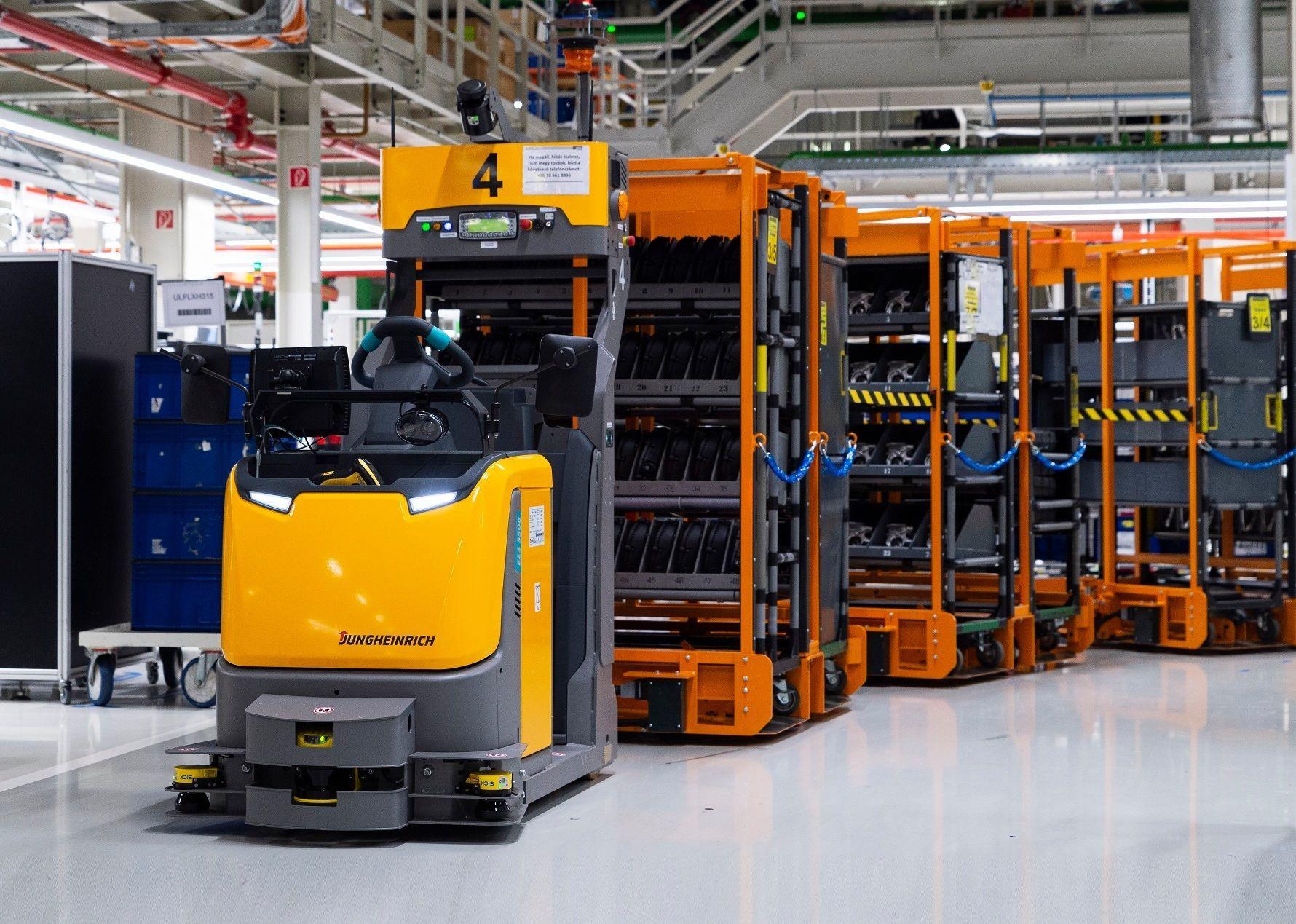[ad_1]

Audi Hungaria has collaborated with Jungheinrich, in which six driverless transport vehicles were deployed within the Otto engine production plant that makes 2.0-litre four-cylinder engines.
The driverless transport vehicles (FTFs) deliver various engine parts from the logistics area straight to the production line. Furthermore, they automatically stop at 57 stations during their journey of more than 1,000 metres, and 50 of which are located right next to the production line. This allows for particularly efficient and reliable material transport, said the company in a release.
Robert Buttenhauser, Member of the Board of Management responsible for engine production, AUDI HUNGARIA Zrt, said, “Audi Hungaria is the world’s largest engine manufacturer and the central engine supplier of many brands of the Volkswagen Group. This means that we are always required to use state-of-the-art technology. Automation of our logistics processes is an important step in this area, which contributes to increasing our efficiency and boosting our competitiveness.”
FTFs can carry parts weighing up to 5,000 kgs for the production of four-cylinder petrol engines in a single journey. On the way back, they transport packaging materials back to the logistics area.
Transport systems are guided by laser navigation supported by reflective surfaces installed on objects along the FTF’s route, such as shelves, walls, and columns. Laser navigation allows for the positioning of driverless systems at predefined stations with millimetre-level accuracy.
The company uses a total of 60 driverless transport vehicles in various areas of engine production. For instance, in the manufacturing of electric drives, the driverless transport systems independently transport components of electric drives to individual workstations.
Read more:
[ad_2]
Source link










